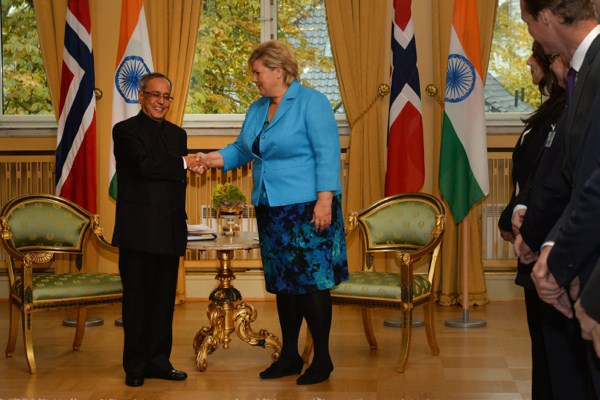Indian President Pranab Mukherjee’s visit to Norway in mid-October, the first by an Indian head of state, was a signal of India’s rising profile in the Arctic. Mukherjee signed 13 agreements with Norway, including one exploring avenues for joint military research between India’s Defense Research and Development Organization and Norway’s Norwegian Defense Research Establishment, known as FFI.
Mukherjee also visited neighboring Finland, where he signed an additional 19 agreements, on everything from civilian nuclear cooperation to education and fishing. But the trip, coming a year after India gained observer status in the Arctic Council—an intergovernmental forum that includes eight member countries that border the Arctic and deals primarily with environmental treaties—was really about the North Pole and Indian efforts to gain a foothold there by building partnerships with Scandinavia.
Unlike Antarctica, the Arctic is not considered a global commons—that is, part of the Earth’s collective natural resources—and instead has become the site of competition as different countries race to claim its riches, including an estimated 25 percent of the world’s undiscovered oil and natural gas, along with massive mineral deposits. India is eager to mark its strategic presence in this contested region and join the Arctic race. Given its geographic distance from the North Pole, India favors a multilateral approach that involves working in concert with Scandinavian countries, as it seeks to balance other major powers, like the United States and Russia, which have direct access to the area. For the small countries in the region, India therefore seems like a natural ally in the Arctic game and one that could help bring Russia around as a partner rather than an adversary. India is also offering Scandinavian companies an important opportunity for favorable techno-economic partnerships that China perhaps no longer affords.

